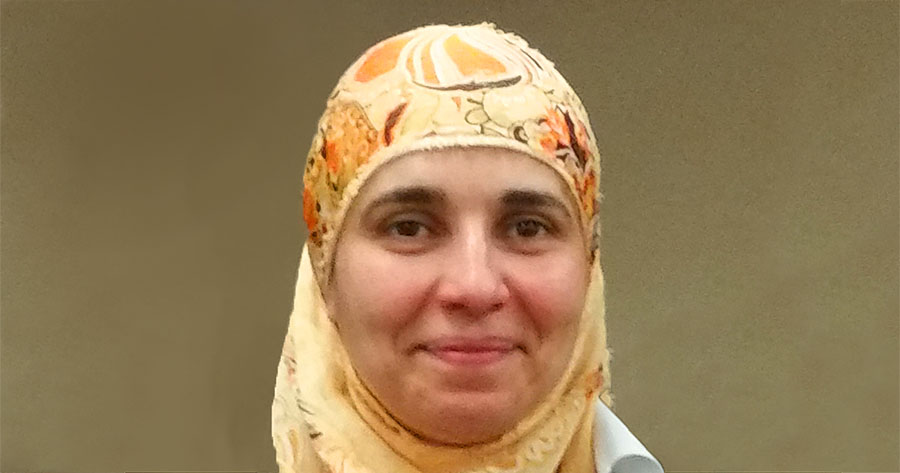Susceptibility to Smoking Differs by Age, Race, and Ethnicity
A study of smoking susceptibility among adolescents who had never smoked has found that Hispanics are more susceptible to smoking during their adolescent years than their non-Hispanic White counterparts are. The susceptibility of Hispanic adolescents peaks at age 12 and again at age 16, according to the study.
The study also found that while there has been a decline in adolescent smoking, susceptibility to smoking has remained steady.

"That is a big deal, because kids who are susceptible may experiment with cigarettes and other tobacco products," said lead researcher Sherine El-Toukhy, Ph.D., M.A. Identifying which adolescents are the most susceptible to smoking and at what age could be a cost-effective way to target anti-smoking efforts.
Dr. El-Toukhy drew her data from 144,000 youths, 9 to 21 years old, who responded to the National Youth Tobacco Survey between 1999 and 2014. The study, "Trends in susceptibility to smoking by race and ethnicity," appears in the journal Pediatrics and was conducted by Dr. El-Toukhy with Melanie Sabado, Ph.D., M.P.H., and Kelvin Choi, Ph.D., M.P.H., all from NIMHD.
Susceptibility as a precursor to smoking
Previous research has identified racial and ethnic differences in smoking. Hispanic students have the highest prevalence of smoking in middle school. Non-Hispanic Whites have the highest smoking prevalence in high school, and Hispanics have the second highest rate. Non-Hispanic Blacks begin smoking later, but those who take up smoking at age 14 or older are more likely than non-Hispanic Whites to continue to smoke into adulthood.
The study focused on youth who had never tried a cigarette and looked at whether there are trends in susceptibility to smoking among different racial and ethnic groups. Susceptible youth are those who have never smoked but report being open to trying at least one puff of a cigarette. Non-susceptible youth report they would not try even a single puff. Susceptibility can indicate who is at risk and when.
"We know that 88 percent of smokers start smoking by age 18," Dr. El-Toukhy said. "That's why we use data from adolescents as an important developmental stage." The study controlled for known risk factors for starting to smoke, including living with a smoker, having peers who smoke, and exposure to tobacco advertising and promotions.
Differences in race and ethnicity
The study found that, on average and without being broken down by racial or ethnic group, youth are most susceptible to smoking cigarettes between the ages of 13 and 15. Overall, susceptibility peaks at age 14, when 27 percent of youth are susceptible. However, there are different patterns among racial and ethnic groups, including the following:
- Hispanic youth are consistently more susceptible to smoking than non-Hispanic White youth.
- Susceptibility among Hispanic youth peaks at age 12 and again at age 16.
- All groups except Asian Americans exhibit heightened susceptibility between 11 and 13 years old.
- Asian Americans are less susceptible up until age 15, after which they do not differ from non-Hispanic Whites.
These susceptibility rates can be used as a screening tool during annual pediatric wellness visits to reduce smoking initiation among at-risk youth. Pediatricians who screen for smoking susceptibility and identify youth at particular risk can provide anti-smoking materials and advise the youth's parents to discuss the issue with the child. Parental advice against smoking has been shown to be a protective factor.
This study focused on cigarette smoking, not on other types of products such as smokeless tobacco or e-cigarettes. It is not clear whether there are similar racial or ethnic differences in adolescents' use of these products.
Susceptibility: A predictor of smoking
The literature confirms that susceptibility is a precursor to smoking, Dr. El-Toukhy said. However, the time when susceptibility occurs does not neatly align with the time when smoking begins. For example, non-Hispanic Blacks are most susceptible between ages 11 and 13 but are more likely to begin smoking around age 16.
"We don't know what happens between being susceptible to smoking and actually beginning to smoke," Dr. El-Toukhy said. "There may be factors that delay the transition to smoking and factors that speed it up. These factors may be different for different racial and ethnic groups. We are trying to understand that transition and its causes."
"The findings of this paper highlight the need to tailor interventions to racial and ethnic minorities to reduce smoking disparities," Dr. El-Toukhy concluded. "The point is to target interventions to the right groups at the right times."
References
- El-Toukhy, S., Sabado, M., Choi, K. (2016). Trends in susceptibility to smoking by race and ethnicity. Pediatrics, 138(5), e20161254. doi: 10.1542/peds.2016-1254.
Posted June 26, 2017

















